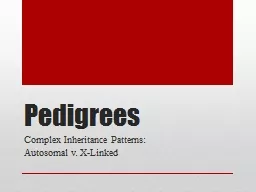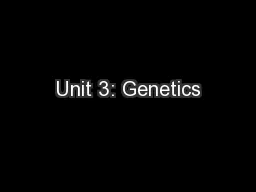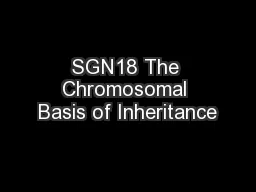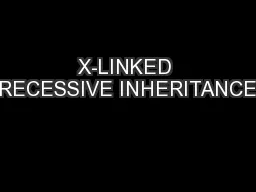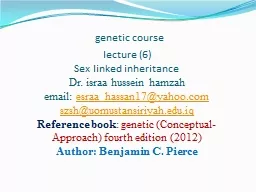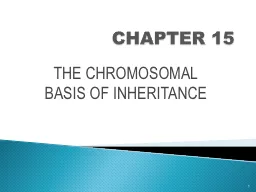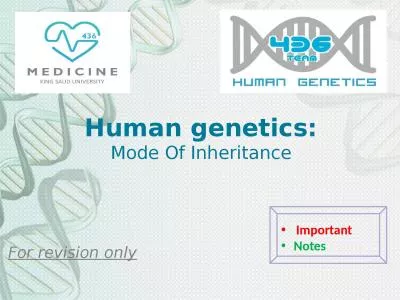PPT-lecture (6 ) Sex linked inheritance
Author : bethany | Published Date : 2022-06-11
Dr Aqeel M ali 2019 B asic principles of heredity that Mendel discovered from his crosses among pea plants A mendelian principle sexlinked characteristics
Presentation Embed Code
Download Presentation
Download Presentation The PPT/PDF document "lecture (6 ) Sex linked inheritance" is the property of its rightful owner. Permission is granted to download and print the materials on this website for personal, non-commercial use only, and to display it on your personal computer provided you do not modify the materials and that you retain all copyright notices contained in the materials. By downloading content from our website, you accept the terms of this agreement.
lecture (6 ) Sex linked inheritance: Transcript
Download Rules Of Document
"lecture (6 ) Sex linked inheritance"The content belongs to its owner. You may download and print it for personal use, without modification, and keep all copyright notices. By downloading, you agree to these terms.
Related Documents



